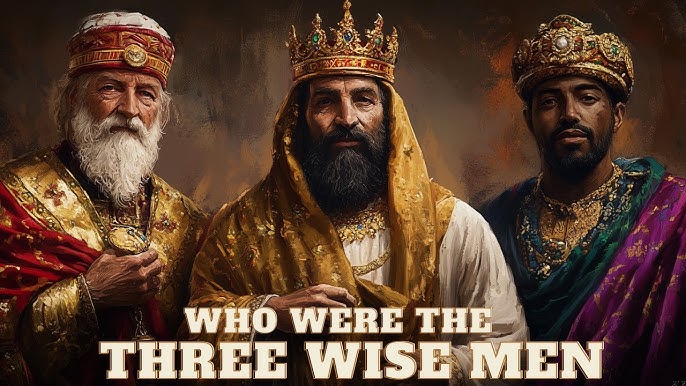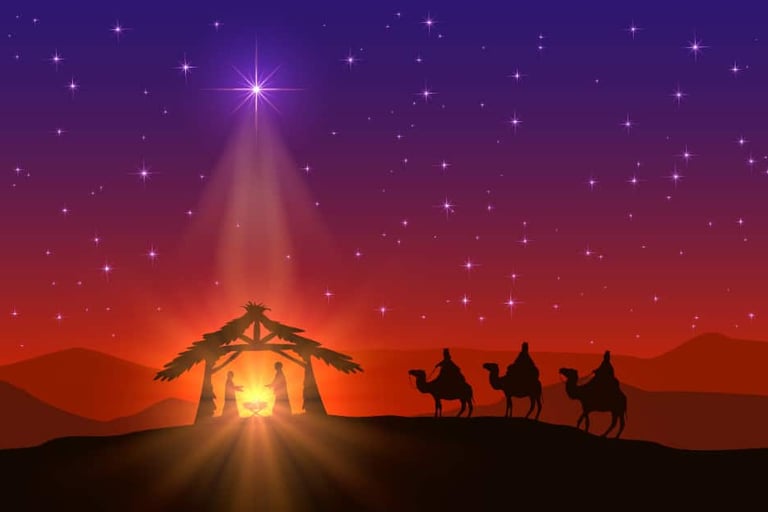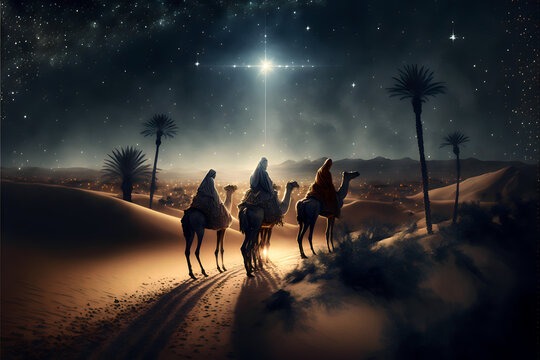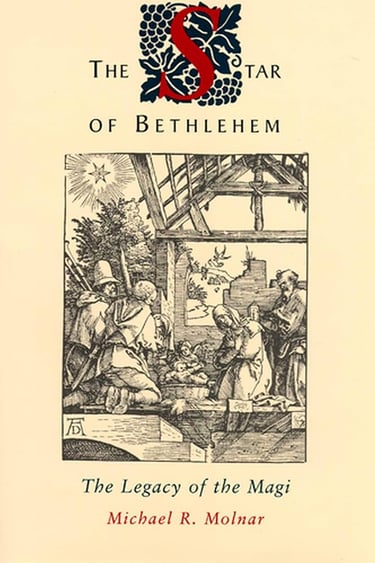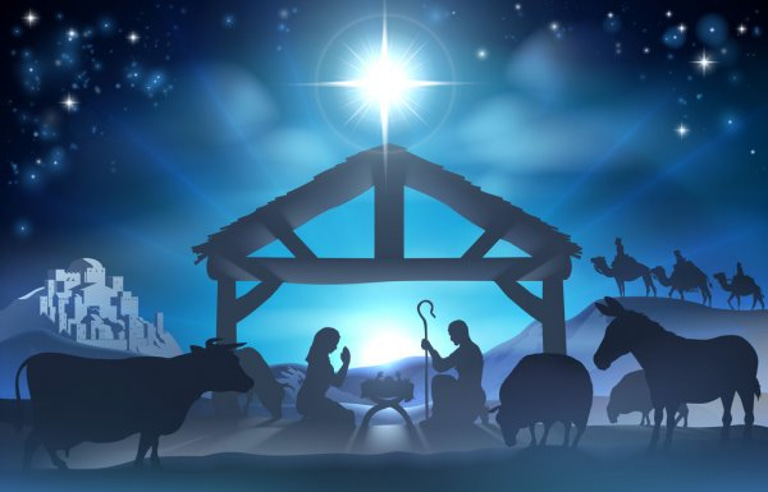What Happened to the Wise Men After Visiting Baby Jesus?
Discover what happened to the Wise Men after visiting Baby Jesus. Explore their journey and deep meaning in history. Click to learn more.
Grace Callahan
1/10/202512 min read
What happened to the Wise Men after visiting Jesus?
According to the Gospel of Matthew, the Magi were divinely warned in a dream not to return to King Herod. Obeying this guidance, they departed for their homeland by another route, avoiding Herod's deceitful intentions (Matthew 2:12).
Do historical traditions provide details about the Magi's later lives?
While the Bible doesn't elaborate on the Magi's subsequent lives, various traditions and apocryphal texts offer insights. The "Revelation of the Magi," an early Christian writing, suggests they hailed from a land called Shir (possibly in the East) and, after their encounter with Jesus, spread his teachings in their homeland.
What is the significance of the Magi in Christian tradition?
The Magi symbolize the recognition of Jesus by the Gentile world, highlighting the universal nature of his mission. Their visit is commemorated during the Feast of Epiphany on January 6, celebrating the revelation of Christ to all nations.


Introduction
The Wise Men, or Magi, are key figures in the story of Jesus' birth. These mysterious travelers followed a star to honor the newborn King with gifts of gold, frankincense, and myrrh. But what happened to them after they left? Accounts from the Bible, along with historical traditions, reveal their divine warning to avoid King Herod and the lasting influence of their journey. This post will explore these intriguing stories and their significance in Christian traditions. Discover the legacy of the Magi and the impact of their remarkable visit.
The Biblical Account of the Wise Men's Departure
When I think about the Wise Men's departure, I’m struck by the drama and layers of meaning packed into just a few verses. How often do we skim past this moment without realizing its depth? Let’s unpack it.
A Divine Warning
Imagine this: you're in a foreign land, you've just paid homage to a child you believe is the future king, and then, in a dream, you're warned of danger. The Gospel of Matthew tells us that the Wise Men were divinely warned not to return to King Herod. Think about the trust and faith it takes to act on such a cryptic message. Would you have the courage to follow such guidance, especially when defying a ruler as ruthless as Herod?
Herod wasn’t just a king; he was a tyrant. Historians like Josephus paint him as paranoid and brutal, known for executing even members of his own family. So, when the Wise Men chose to disobey Herod’s request, they weren’t just taking a detour—they were risking everything.
The Other Route
The phrase "by another route" carries a simplicity that belies its significance. To me, it symbolizes more than just geography. It’s a metaphor for transformation. They left Bethlehem changed, having encountered not only a child but something divine. Does anyone ever walk the same path after such an experience?
I wonder about the logistics, too. How much longer did the new route take? Did they face obstacles? The Bible doesn’t say, but the silence invites us to imagine their journey—a clandestine trek through unfamiliar terrain, looking over their shoulders, hearts pounding with every hoofbeat.
Obedience and Its Symbolism
Their decision to obey the dream reflects a profound reverence for divine guidance. It’s easy to dismiss this as a simple act of piety, but isn’t it also an example of radical trust? They followed a message without explanation or evidence, something most of us would hesitate to do.
This act of obedience resonates deeply with themes throughout Scripture: faith over fear, submission to God’s will, and the triumph of divine plans over human schemes. Their choice reminds me that faith often requires us to veer off our expected paths, trusting that the unseen road will lead somewhere meaningful.
The Wise Men's departure is far more than a narrative footnote; it's a rich tapestry of faith, courage, and transformation. It challenges us to reflect: Are we willing to take the "other route" in our lives? Do we listen when divine guidance nudges us, even if it means defying authority or taking risks?
For further reading on Herod’s historical context, I’d recommend Britannica’s entry on King Herod. It’s a fascinating dive into the political tension surrounding the Nativity story.
Historical Traditions About the Wise Men’s Lives
The Wise Men, or Magi, hold a mystique that stretches far beyond their brief mention in the Gospel of Matthew. What happened to them after Bethlehem? Who were they, really? As someone fascinated by the intersection of faith and history, I can’t help but dive into the wealth of traditions and theories that surround these enigmatic figures.
Early Christian Writings and Apocryphal Texts
If you’ve ever wondered why the Bible gives so little detail about the Magi, you’re not alone. Early Christians, too, seemed unsatisfied with their mysterious cameo, and by the 3rd and 4th centuries, a flood of apocryphal writings and legends emerged to fill the gaps.
One such text, the Revelation of the Magi, paints an imaginative picture of these men as priests from the mystical land of Shir (possibly Persia or China). According to the story, they were guardians of a sacred prophecy handed down from Adam. Does this sound fantastical? Absolutely. But these early accounts reflect a deep yearning to understand who the Magi were and why they mattered.
Theories About Their Identities and Homelands
Theories about the Magi’s origins are as varied as the cultures that venerate them. Were they Zoroastrian astrologers from Persia? Indian sages? Arabian scholars? Each possibility carries its own flavor of historical intrigue.
Persian Connection: The word “Magi” itself comes from an old Persian term for priests and astrologers, lending weight to the idea that they hailed from the Parthian Empire. This would explain their expertise in astronomy and their likely familiarity with Jewish messianic prophecies during the exile in Babylon.
Indian Sages: Some argue for an Indian origin, connecting the gifts of gold, frankincense, and myrrh to India’s ancient trade networks. Could their spiritual wisdom have been shaped by Eastern philosophies?
Arabian Scholars: Myrrh, in particular, was a prized export from ancient Arabia, and some believe this hints at their Arabian roots.
Personally, I find the Persian theory most compelling. It ties together historical plausibility with the religious and cultural syncretism of the time. But who’s to say there wasn’t a diverse delegation? After all, the Magi were likely cosmopolitan figures with access to knowledge from across the ancient world.
Speculations on Their Lives After Bethlehem
Here’s where tradition takes an even wilder turn. What did the Wise Men do after laying their gifts before Christ? While the Bible leaves their fate a mystery, later legends imagine them becoming evangelists of sorts.
One tradition claims they returned to their homelands to spread news of the Messiah, planting seeds of Christianity long before Paul’s missionary journeys.
Another suggests they eventually reconvened years later, with some accounts placing their burial sites in places like Cologne, Germany, where a grand cathedral still claims to house their relics.
Do these tales hold historical weight? Probably not. But they reveal how deeply the Magi captured the Christian imagination, becoming symbols of faith and discovery.
When I think about the Wise Men, I see them as bridges between worlds—east and west, science and faith, prophecy and fulfillment. Their story invites us to consider our own journeys: What truths are we seeking, and how far are we willing to go to find them?
For a deep dive into apocryphal writings about the Magi, check out Early Christian Writings, an excellent resource for exploring non-canonical texts.
Legends and Myths Surrounding the Magi
The Magi—those mysterious visitors from the East—haven’t just inspired Christian tradition; they’ve fueled centuries of legends, myths, and cultural reinterpretations. Who wouldn’t want to expand on such an enigmatic story? Over time, these figures have taken on identities far grander than anything the Gospel of Matthew hints at.
Stories of Their Martyrdom or Sainthood
Did the Magi die as martyrs, or were they venerated as saints? Depending on the tradition, their earthly journeys ended in either sacrifice or sanctity.
One legend claims that the Magi returned to their homelands, only to face persecution for proclaiming Christ. Their unwavering faith supposedly led to martyrdom, turning them into early examples of Christian witness. While there’s no historical evidence to back this, it’s a moving story that reflects the cost of faith in hostile territories.
In contrast, the Western Church elevated the Magi to sainthood. By the Middle Ages, they had names—Caspar, Melchior, and Balthazar—and were celebrated in pageants and art as saintly figures. The Cathedral of Cologne even claims to house their relics, which were reportedly brought to Europe by the Holy Roman Emperor Frederick Barbarossa in the 12th century. Skeptical? So am I, but relics were a cornerstone of medieval devotion, regardless of their authenticity.
Their Connection to Christian Missionary Work
Legends also depict the Magi as proto-missionaries, spreading the message of Christ far and wide. One account, popular in Syriac Christianity, claims they shared the news of the Messiah in their own lands, laying the groundwork for the spread of Christianity in the East.
The idea of the Magi as evangelists appeals to me. It transforms them from passive gift-bearers into active participants in God’s plan. It’s not just a nice thought—it’s a powerful reminder that encounters with the divine demand a response.
How Different Cultures Shaped the Legends of the Magi
What fascinates me most is how different cultures have reshaped the Magi to fit their own narratives.
In Ethiopia, the Magi are sometimes depicted as African kings, emphasizing their connection to the continent. This aligns with Ethiopia’s ancient Christian heritage and its pride in ties to biblical figures like the Queen of Sheba.
In European art, the Magi became a visual shorthand for the universality of Christ’s kingdom. By the Renaissance, they were portrayed as three men of different ages and ethnicities, symbolizing the global reach of the gospel.
In the Middle East, where the Magi’s story likely originated, they’re often remembered as astrologers—scientific minds drawn to Bethlehem by a cosmic event.
Each of these interpretations adds richness to their story. But it also makes me wonder: Have we added so much symbolism to the Magi that we’ve lost sight of their simplicity—a group of seekers following a star?
The legends and myths surrounding the Magi reflect humanity’s fascination with their journey. Whether saints, martyrs, or missionaries, they’ve been shaped by the hopes and imaginations of countless generations. Their story remains a canvas for exploring themes of faith, sacrifice, and the search for truth.
If you’re curious about how the Magi evolved in Christian art and legend, check out the Metropolitan Museum of Art’s collection on Nativity imagery for stunning depictions of these figures through the ages.
The Impact of the Wise Men on Early Christianity
The Magi’s journey to Bethlehem isn’t just a beautiful Nativity scene detail; it’s a story loaded with theological, cultural, and historical significance. Their impact on early Christianity reverberates far beyond their brief biblical mention, shaping theology, inspiring missionary zeal, and becoming central to one of the most celebrated Christian feasts: Epiphany.
Theological Significance of Their Visit
The visit of the Wise Men was more than an act of homage—it was a proclamation. Here were Gentiles, outsiders to Judaism, recognizing and worshiping the Messiah. This moment hints at the universality of Christ’s mission, breaking down barriers between Jew and Gentile.
To me, this is one of the most profound aspects of their story. The Magi’s visit foreshadows the inclusion of all nations in the Kingdom of God, a theme that Paul would later develop extensively in his letters. It’s a reminder that the gospel is for everyone, regardless of origin or status.
Even their gifts—gold, frankincense, and myrrh—carry rich theological symbolism. Gold for kingship, frankincense for divinity, and myrrh for suffering and death. Was this intentional on their part, or an act of divine providence? Either way, it adds layers of meaning that early Christians couldn’t ignore.
How Their Journey Influenced the Spread of Christianity
The Magi’s journey may have been the first hint of Christianity’s global reach. According to some traditions, they carried their newfound faith back to their homelands, planting seeds of belief that would later bear fruit.
While there’s little historical evidence to confirm this, the idea has a powerful appeal. It suggests that the Magi were not just passive participants in the Nativity story but active catalysts in spreading the gospel. Could their influence have prepared the way for later missionary efforts in the East? It’s a tantalizing possibility.
The early Church certainly saw the Magi as a symbol of the Gentile world coming to Christ. This interpretation would have resonated deeply as Christianity spread across the Roman Empire, crossing ethnic and cultural boundaries.
The Role of the Magi in the Celebration of Epiphany
If you’ve ever celebrated Epiphany, you’ve participated in a tradition shaped by the Magi. This feast, observed on January 6, commemorates their visit to Christ and is a cornerstone of the liturgical calendar in many Christian traditions.
For the early Church, Epiphany wasn’t just about the Magi—it was a celebration of Christ’s manifestation to the world. The Magi’s visit served as the perfect symbol of this revelation, representing the nations recognizing Jesus as the Messiah.
What I love about Epiphany is how it bridges cultures. From elaborate parades in Spain to chalk blessings in Poland, the traditions surrounding the feast showcase the universal appeal of the Magi’s story. It’s a testament to how their journey continues to inspire faith and wonder.
The Wise Men may have been brief visitors in the biblical narrative, but their impact on early Christianity was anything but fleeting. Their journey challenged theological norms, hinted at the global mission of the Church, and left a legacy that continues to shape Christian worship today.
If you’re interested in exploring the Magi’s role in the early Church, I recommend reading The Birth of the Messiah by Raymond E. Brown, which delves into the theological and historical context of the Nativity story.
Modern Perspectives on the Wise Men’s Journey
The Wise Men’s journey is no longer confined to the pages of ancient texts or medieval legend. Today, their story is a subject of intense scholarly debate, artistic exploration, and reinterpretation for modern audiences. What can archaeology, art, and contemporary thought teach us about these mysterious travelers? Let’s dig in.
Archaeological Evidence and Scholarly Debates
The quest to ground the Magi in historical reality is both fascinating and frustrating. To date, there’s no direct archaeological evidence confirming their existence or their journey to Bethlehem. However, scholars continue to explore indirect clues, such as the role of Zoroastrian priests (Magi) in Persian culture or ancient records of celestial events like the Star of Bethlehem.
Astronomical Alignments: Theories abound about what the Star of Bethlehem might have been—a supernova, a comet, or a rare planetary conjunction. Some scholars propose that the Magi were skilled astronomers interpreting these phenomena through their cultural lens.
Cultural Context: Excavations in Persia and Babylon have revealed texts and artifacts that shed light on the Magi’s possible roles as astrologers and advisors. Were they emissaries sent by a Parthian king? Or itinerant seekers inspired by ancient prophecies?
For me, the lack of definitive evidence doesn’t diminish their story—it enhances its mystery. The Magi’s journey remains a space where faith and history intersect, inviting us to wonder and speculate.
Artistic and Cultural Depictions of the Magi’s Later Lives
The Magi’s journey doesn’t end in Bethlehem, at least not in the imaginations of artists and storytellers. Over the centuries, their lives have been reimagined in ways that reflect evolving cultural and theological priorities.
Renaissance Art: In this era, the Magi were often depicted as representatives of different continents and ages, symbolizing the universality of Christ’s message. These depictions emphasize diversity and inclusion long before such concepts were mainstream.
Medieval Legends: Stories of their later lives often describe them as evangelists or martyrs. The Cathedral of Cologne claims to hold their relics, an assertion that inspired a pilgrimage tradition and reinforced their sainthood in Western Christianity.
Modern Media: Contemporary films, books, and even Nativity sets reimagine the Magi with fresh perspectives, emphasizing their wisdom, curiosity, or the political tension of their journey.
These portrayals aren’t just decorative—they shape how we understand the Magi’s role in the Christmas story. Each retelling invites us to see their journey through a new lens, connecting their ancient story to modern values.
Contemporary Interpretations of Their Story
Today, the Wise Men are often seen as symbols of seeking truth and crossing boundaries. Their story resonates in a world grappling with questions of diversity, inclusion, and spiritual curiosity.
Interfaith Dialogue: The Magi’s openness to divine revelation, despite coming from a non-Jewish background, is a powerful symbol of unity in a divided world. They remind us that wisdom and faith aren’t confined to one tradition or culture.
Personal Reflection: Many find inspiration in the Magi’s willingness to journey into the unknown, guided only by a star. Their story challenges us to ask: What are we seeking in our own lives, and what are we willing to risk to find it?
Personally, I see the Magi as timeless figures—pilgrims who transcend their era to speak to the universal human longing for truth and meaning.
Modern perspectives on the Wise Men breathe new life into an ancient story. Whether viewed through the lens of archaeology, art, or contemporary spirituality, their journey continues to inspire wonder and reflection.
If you’re intrigued by the Magi’s historical and cultural dimensions, check out The Star of Bethlehem: The Legacy of the Magi by Michael R. Molnar, which delves into the astronomical and historical debates surrounding their story.
Conclusion
The story of the Wise Men extends far beyond their visit to Baby Jesus. Their journey exemplifies a deep devotion that still resonates today. As symbols of the search for the divine, they remind us of the importance of honoring what we hold sacred. Their legacy invites us to explore further and understand the rich history and spiritual significance behind their actions. Take a moment to reflect on the impact of their story and consider how it can inspire your own journey in faith.
